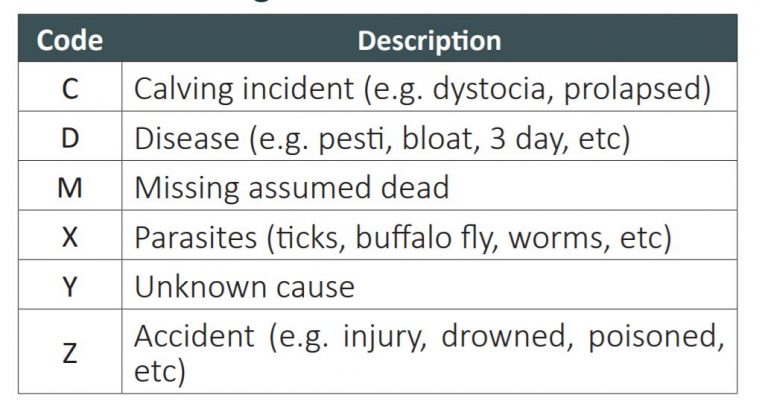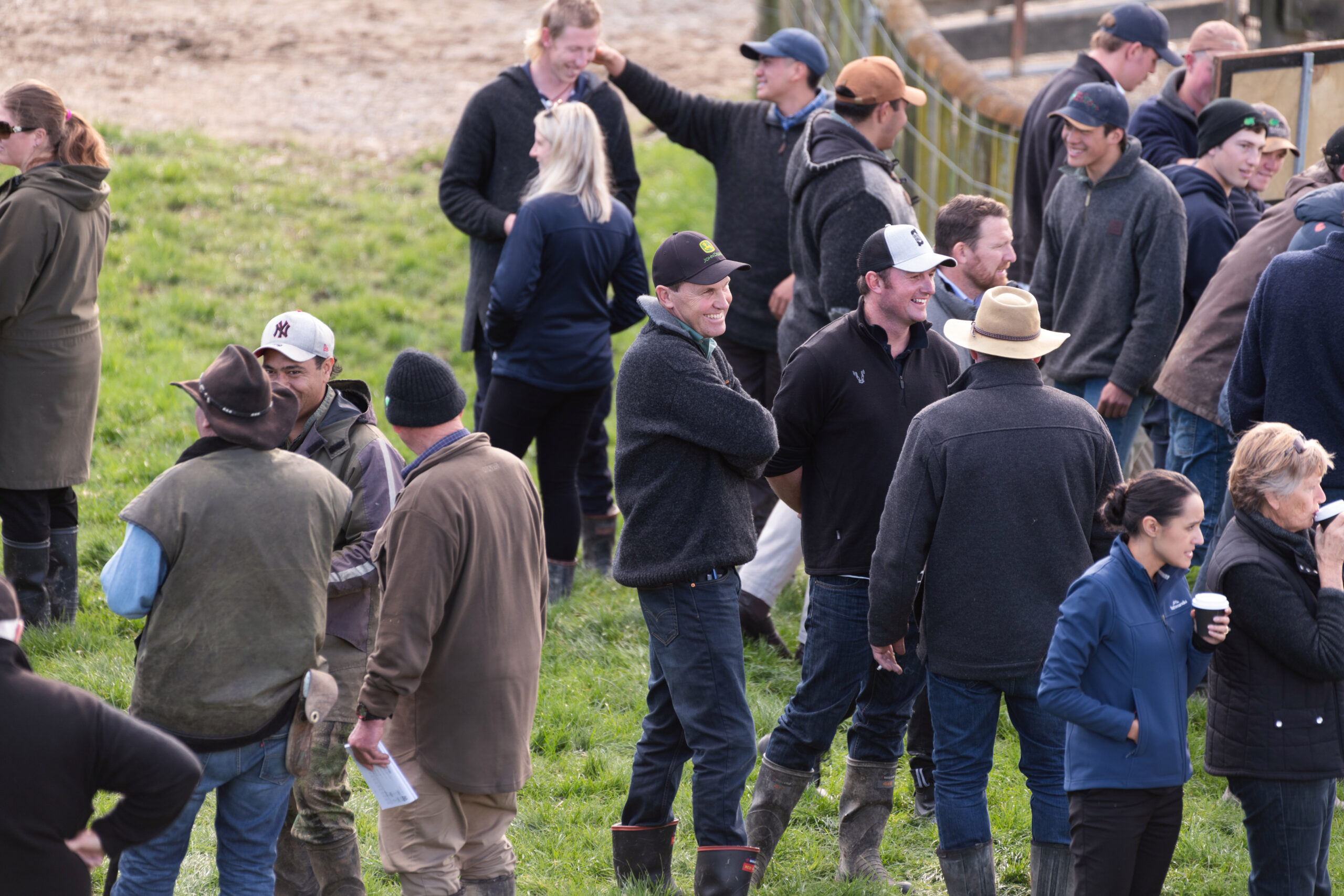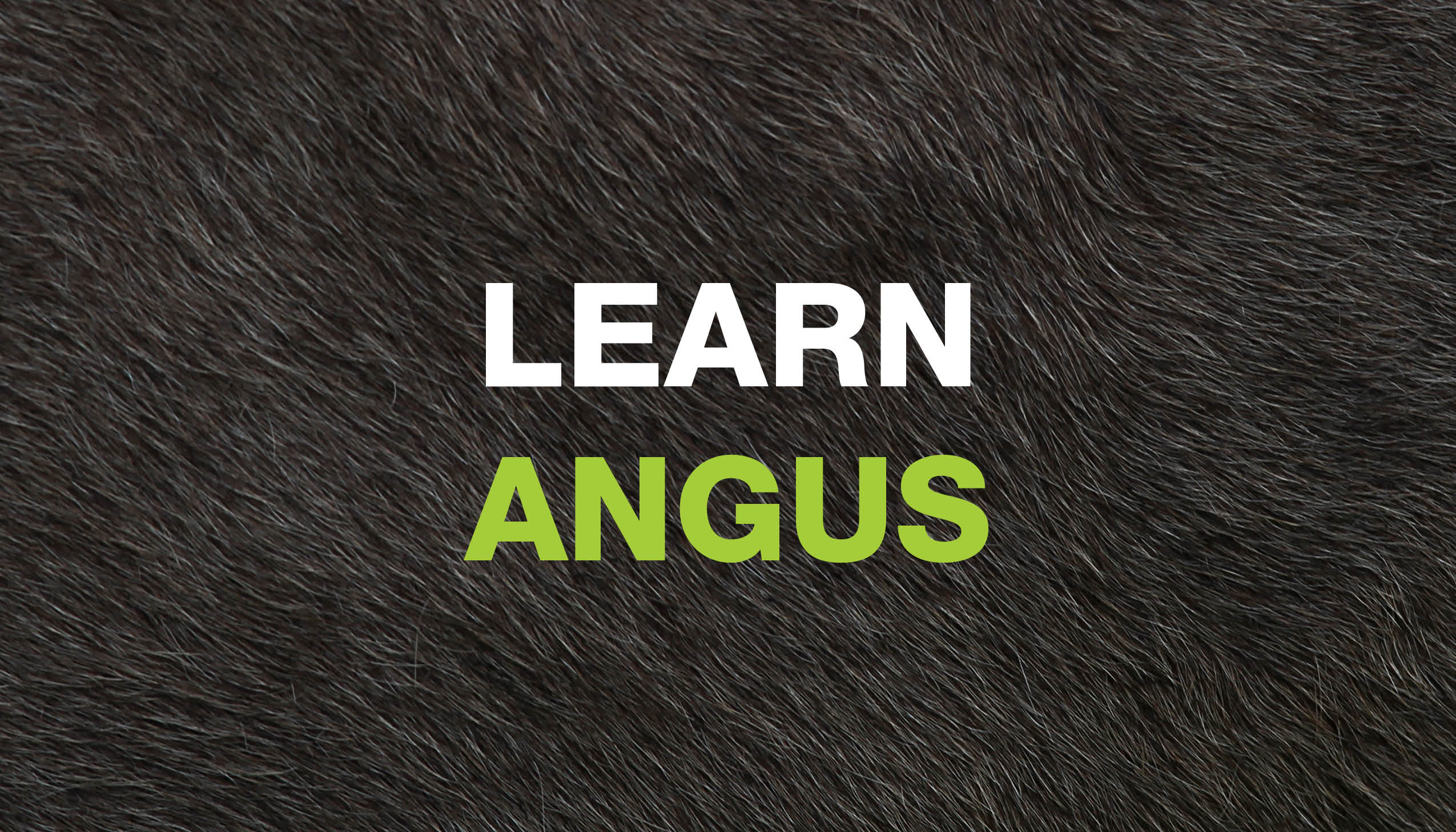Joining details of heifers and mature cows mated in natural paddock joining programs are used to calculate Days to Calving EBVs.
What to collect?
Breeders interested in the Days to Calving EBV need to record all ‘events’ associated with the natural joining of their females from the start of the mating period in each breeding season through to when the subsequent calves are born. This includes those females that have only been joined naturally within a breeding season – not those that have been included in artificial insemination/ embryo transfer programs or artificially induced to cycle prior to joining with the bull outside of such programs.
Broadly, the information to be collected should include:

While not currently included in the Days to Calving analysis, research is now underway to determine whether details from artificial insemination (AI) and embryo transfer (ET) programs could be utilised by TACE (TransTasman Angus Cattle Evaluation).
Joining details
Record each natural joining event to which a female (cow or heifer) is exposed within the breeding season whether this was the successful joining or not. For situations where females are joined to several bulls in a mating season, record all joinings for the female, not just the first or successful joining.
For each natural joining event within the breeding season, record the bull the female was joined to, the date she was joined (‘bull in’ date) and the date the bull was removed (‘bull out’ date). Knowing the end of the joining period is important in analysing the Days to Calving trait.
Record management group information to identify any cow/s within a joining group whose fertility may have been affected either prior to or during the joining program due to non-genetic factors. e.g. significantly different nutrition, sickness, injury. A maximum of three characters (letters and/or numbers) can be used to describe each management group.
Calf details
All calves that are born as a result of the joinings need to be recorded with Angus NZ. Not recording all calves (including dead calves) will bias the Days to Calving EBVs that are calculated.
Female disposal
Record the date and reason for any female removed from the herd, particularly those present at the start of joining that are no longer within the herd by the time of the subsequent calving.

The fate/disposal code information is critical to the Days to Calving analysis and is used to determine whether females that have a joining record but no subsequent calf should be penalised for being “culled for infertility” or not penalised because they were culled for other reasons e.g. structure, performance etc. In the future, this information may also be used as part of the calculation of a Female Longevity EBV.
The codes to be used to record a female fate/disposal event are as follows:
Culled or Sold Codes

Died or Missing Codes

Pregnancy test results
Optionally, where pregnancy test results are available, record the date and result of the test for each female joined. This information is not currently included in the Days to Calving analysis, however it may be utilised in the future to either enhance the calculation of Days to Calving EBVs, or for the calculation of other female fertility EBVs.
Pregnancy test results should be reported as:
N = Not pregnant
P = Pregnant
A number between 3-20 (i.e. the number of weeks pregnant as advised by a qualified technician. )
Where the foetus is over 20 weeks old, a ‘P’ should be used.

Tips on collecting Days to Calving Information
- Collect joining details for ALL cows in the recorded herd to accurately reflect the cow fertility in the herd. Simply recording those cows that have a calf or those cows that remain on inventory in the next year is not adequate.
- Collect details for all maiden heifers joined – not just the ones that calve or are added to inventory. Information on maiden heifers is very important as many herds cull heifers that do not conceive in the first year of joining. The heifers that do not calve supply as much information to the analysis as those that do calve.
- Record the details of all joining events in which the female was involved even if the joining was unsuccessful. For situations where females are joined to several bulls in a mating season, record all joinings for each cow and heifer within the joining period, not just the first or successful joining.
- Accurately recording the fate/disposal codes of all females that leave the herd is extremely important. In the Days to Calving analysis, this fate/disposal code information is used to determine whether a female should be penalised for being “culled for infertility” or not penalised because she was culled for other reasons (e.g. structure, performance etc.)
- Joining details for females that have been joined to multiple sire groups (rather than a single sire) should also be recorded. In this scenario, the sire ident that is specified should be the multiple sire ident, rather than the ident of the individual sire that resulted in the calf. Similarly, joining details for females mated to sires not recorded with Angus NZ (e.g. unregistered sires, sires of another breed) should also be submitted.
- Herds with either a very wide calving spread (e.g. cows joined all year around), several calvings each year (e.g. an autumn, winter and spring calving), or who have a high proportion of artificial breeding may have difficulty collecting joining information that is useful for the calculation of Days to Calving EBVs. Herds in such situations should contact staff at Angus NZ for further advice.


